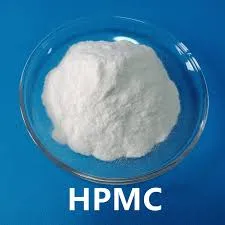
Jul . 29, 2024 22:21 Back to list
Exploring the Advantages of Mortar Bonding Agents for Enhanced Construction Durability and Performance
The Role of Mortar Bonding Agents in Construction
In the realm of construction and masonry work, the importance of adhesion cannot be overstated. One of the key components that enhance the bond of mortar with various substrates is the mortar bonding agent. These specialized agents play a critical role in ensuring durability and quality in masonry applications, effectively bridging the gaps between different materials and providing lasting structural integrity.
Mortar bonding agents are primarily used to improve the adhesion of mortar to different surfaces, such as concrete, brick, stone, and even older mortar layers. Typically, these agents are liquid solutions that can be mixed with water, added to the mortar, or applied as a primer before the mortar is applied. Their primary function is to promote a stronger bond between the mortar and the substrate, which is particularly essential in areas subject to stress, movement, or environmental challenges.
One of the significant advantages of using mortar bonding agents is their ability to enhance the flexibility of mortar. Standard mortar can sometimes be rigid, which may lead to cracking when subjected to temperature fluctuations or structural movement. By incorporating a bonding agent, the resulting mixture becomes more resilient, allowing it to absorb slight movements without compromising its structural integrity. This feature is especially valuable in climates with extreme temperature variations or in buildings that must endure frequent settling or shifts.
Additionally, mortar bonding agents can significantly improve the overall performance of mortar in terms of workability and processability. Many agents contain additives that enhance the mortar’s adhesion properties, making it easier for masons to work with and apply. This can lead to smoother finishes and more precise applications, which is beneficial both for aesthetics and structural quality. Moreover, the use of a bonding agent can reduce the risk of delamination, where the mortar may separate from the substrate over time, ensuring a longer lifespan for masonry work.
mortar bonding agent

In terms of application, the use of bonding agents is straightforward. Masons typically apply a thin layer of the bonding agent to the surface where mortar will be placed. This layer should be allowed to become tacky before the mortar is applied, which facilitates an optimal bond. When mixing the bonding agent with the mortar, it is vital to follow the manufacturer’s instructions for the correct ratio, as this will yield the best results.
Environmental factors also play a noteworthy role in the selection of mortar bonding agents. Many modern bonding agents are formulated to be environmentally friendly, containing low levels of volatile organic compounds (VOCs) and other harmful substances. This emphasizes a growing trend in the construction industry towards sustainability and environmental responsibility, ensuring that projects adhere to modern standards and regulations.
Moreover, the economic implications of using bonding agents should not be overlooked. By improving the longevity and durability of masonry work, these agents effectively minimize repair and maintenance costs in the long run. Projects that utilize bonding agents often experience a reduction in time and resources spent on repairs due to superior adhesion and structural integrity.
In conclusion, mortar bonding agents represent a crucial innovation in construction that enhances the performance of mortar applications. By providing improved adhesion, flexibility, and workability, these agents are invaluable in creating strong, durable, and aesthetically pleasing masonry work. As the construction industry continues to evolve, the use of mortar bonding agents will likely expand, further underscoring their significance in contemporary building practices. Whether in new constructions or renovations, incorporating mortar bonding agents can yield tangible benefits, contributing to the overall success of masonry projects.
-
Versatile Hpmc Uses in Different Industries
NewsJun.19,2025
-
Redispersible Powder's Role in Enhancing Durability of Construction Products
NewsJun.19,2025
-
Hydroxyethyl Cellulose Applications Driving Green Industrial Processes
NewsJun.19,2025
-
Exploring Different Redispersible Polymer Powder
NewsJun.19,2025
-
Choosing the Right Mortar Bonding Agent
NewsJun.19,2025
-
Applications and Significance of China Hpmc in Modern Industries
NewsJun.19,2025







